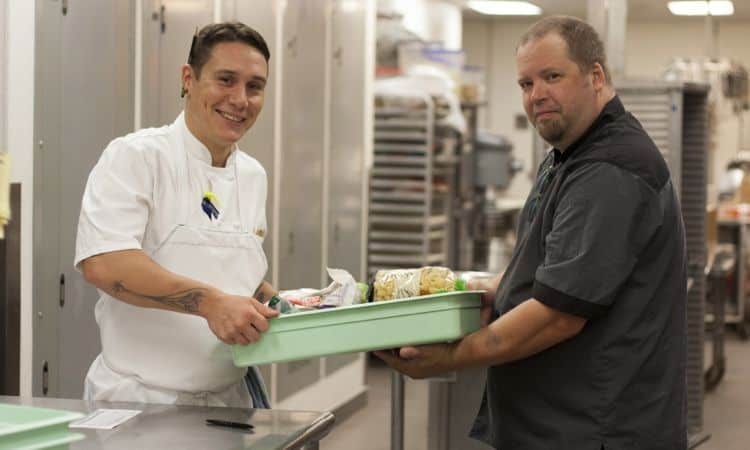“Recovering food that would otherwise be discarded would take a significant bite out of hunger. We currently waste enough food to end food insecurity in America,” says Jonathan Bloom, author of American Wasteland, a book that chronicles the impact of America’s food waste. The logistics involved with efficiently and safely donating perishable food products can be difficult and may dissuade some food manufacturers and retailers from donating. However, as a recent survey conducted by the Food Waste Reduction Alliance shows, one of the primary barriers keeping companies from donating wholesome unsold food is liability concerns. In our upcoming webinar “Donating Unsold “Donating Unsold Food – A Primer on Liability, Food Safety, & the Good Samaritan Act,”Food – A Primer on Liability, Food Safety, & the Good Samaritan Act,” we will discuss liability concerns and clear up misconceptions that may keep companies from donating food. Our panel of food recovery experts and veterans will also answer your questions during the second half of the webinar.
Research shows that concerns over food safety lawsuits related to donated food are not grounded in experience. Nicole Civita, Professor at the University of Arkansas School of Law and co-author of Food Recovery – A Legal Guide, says, “We conducted extensive, nationwide legal research looking for lawsuits against food donors alleging liability for harm from donated food. We found absolutely no cases —no claims filed and no judicial decisions — whatsoever. The apparent absence of litigation or other disputes related to food donation demonstrates that fears of lawsuits and negative publicity related to mishaps with donated food are overstated and largely illusory barriers to food recovery.” Moreover, the Bill Emerson Good Samaritan Food Donation Act, signed into law in 1996, provides legal liability protection for food donors and recipients.
For decades, many companies and organizations have been donating fresh and prepared foods to hunger relief organizations without any problems. “In 22 years and with over 360 million pounds of food donations coordinated, the Food Donation Connection has never had a food borne illness attributable to a food donation,” says Jim Larson, Program Development Director for Food Donation Connection (FDC). FDC works with supermarkets and restaurants like Red Lobster, Chipotle Mexican Grill, and the Cheesecake Factory to develop food recovery programs in their company operations. There are other similar organizations across the country that can help companies, large and small, get food recovery efforts started and advise them on food safety issues. “FDC works with each business to develop and customize procedures to safeguard donated food. The surplus, wholesome prepared food is held hot and then rapidly cooled through the temperature danger zone. It is then frozen and stored in food-safe bags that clearly identify it as food destined for donation. Finally, FDC links the donor stores with local, qualified charities that feed the hungry (food pantries, soup kitchens, shelters, food banks, etc.) and we provide them with resources and transport pouches to safely transport the donations. Those charities come to pick the food up from the donor on a regular schedule – at least once a week – thus avoiding any food storage space issues for the donor,” explains Larson.
Some food service companies like Bon Appétit Management Company have fostered a companywide culture that encourages food recovery efforts in all of their university and corporate cafeterias across the country. “Feeding people rather than compost bins is critical to our mission to provide sustainable food service. We equip our staff with the tools and knowledge they need to be able to launch a food recovery program. For example, we have created a guide to food recovery for our chefs and managers; we have done companywide trainings on food recovery; and we have put systems in place to reward and recognize accounts that donate” says Claire Cummings, Waste Specialist at Bon Appétit.
While food recovery programs may seem like an extra burden on employees, some companies with such programs report the opposite. “Our chefs and managers love participating in food recovery because it lets them address the heartbreaking issue of hunger in our community while also reducing the amount of food wasted in our cafés. It is a morale booster for our teams,” explains Cummings. Larson adds, “At the end of the day, chefs, cooks and servers with a passion for creating and serving delicious, nourishing meals are reluctant to throw out the food that has not been sold. Why not redirect it to someone in need who will appreciate and benefit from the nutrition?”
Despite a lot of great efforts from food companies and hunger relief organizations, there is still more food that can be recovered. Feeding America estimates that there is still more than 22 billion pounds of food at the retail level that could potentially be donated. This is even after Feeding America reported that their network of food banks recovered 2.2 billion pounds of food in 2013-2014. There is more work to be done and a lot of positive change can happen with the help of consumers. As author and food recovery advocate Jonathan Bloom reminds us, “Folks can ask their favorite supermarkets or restaurants if they donate edible, unsellable food. Letting grocery store and restaurant managers know that their donations impact customer opinion is powerful. And connecting that food operation with a recipient organization willing to collect that food is even more helpful.”
For more information about food waste and how to reduce, recover, and recycle it, please visit our website at www.usda.gov/oce/foodwaste/















